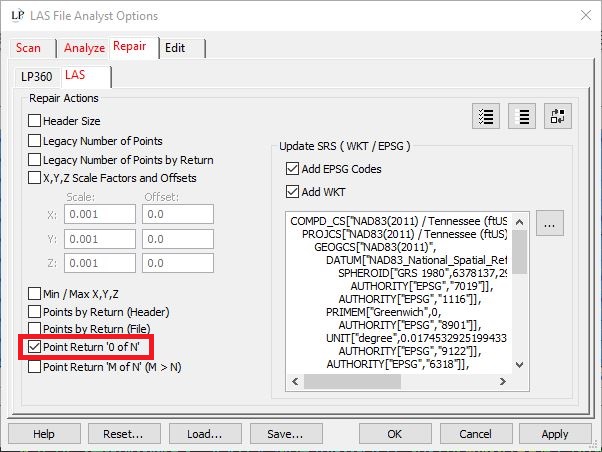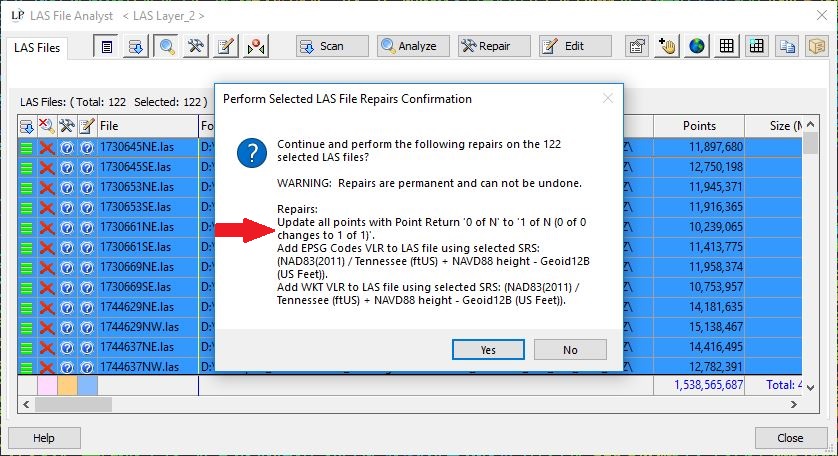Problem:
Attempting to run the adaptive TIN ground filter on a Dense Image Matching (DIM) point cloud does not classify any points.
Probable Resolution #1:
When a point cloud is created from a Dense Image Matching process, the resulting LAS produced by some software is not classified (0) and has 0 of 0 returns. Identifying points in LP360 will show “0 of 0” under Returns. The LAS format expects a Return Number of 1 and higher. The default adaptive TIN ground filter in LP360 filters to last return points, such as 1 of 1, 2 of 2, 3of 3, etc. Hence, 0 of 0 points will be filtered out. To fix the errant points use the LP360 LAS File Analyst repair utility.
- Add the LAS files into LP360 as open for Read/Write
- Select “LAS File Analyst” by right-clicking the LAS layer, or clicking the wrench and hammer icon associated with the main LP360 toolbar.
- A dialogue box will appear in which you choose the LAS files for repair.
- Open LAS File Analyst Options and select Repair tab. Under the LAS tab, check the box for “Point Return ‘0 of N’.

5. Select “Repair” button to update all points.

6. Once the files are repaired, try executing the Adaptive TIN Ground Filter again.
Here are some additional tips on classifying ground with a DIM dataset.